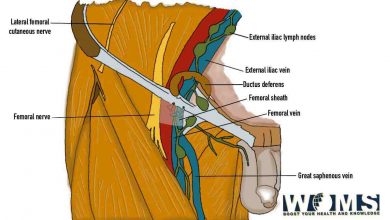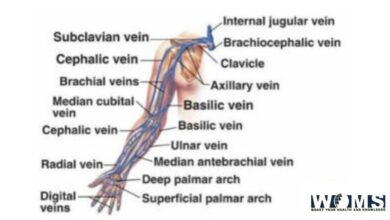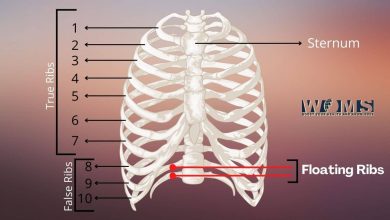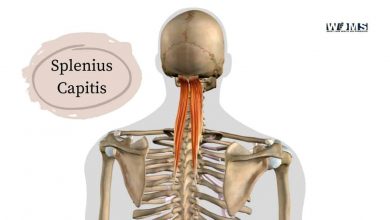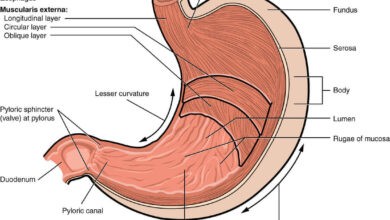Is Blood a Connective Tissue?
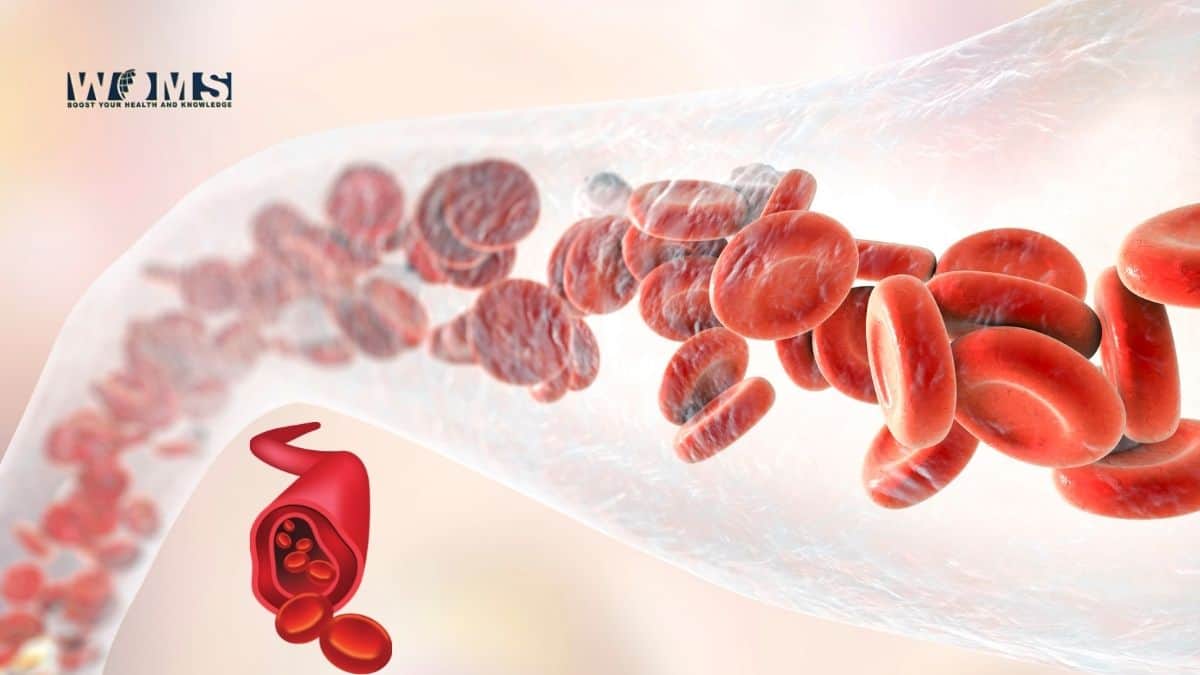
Blood is a specialized type of connective tissue. It is the only fluid connective tissue in the body. Simply, it is a fluid that circulates throughout the human body constantly. It is an opaque fluid with a viscosity greater than water. The mean relative viscosity of blood is around 4.75 at 18 degrees of Celsius.
The color of blood depends on its state of oxygenation. So, oxygenated blood is bright red. Meanwhile, it is dark red to purple when it is deoxygenated. Oxygenated blood is mainly seen in arteries and deoxygenated blood is seen in veins.
Blood has two main components. Those are the plasma and cellular components. Plasma is a clear yellowish fluid. It has water, proteins and many other things dissolved and suspended in it. While cellular components are the RBC, WBC, and platelets. Plasma suspends these components. More details about each component of blood will be in later parts.
How is blood a connective tissue?
What is connective tissue?
Connective tissue is one out of four types of tissues in the human body. The other three are muscle tissue, nervous tissue, and epithelial tissue. There are three characteristic features for connective tissue.
- Contain specialized cells.
- It has extracellular protein fibers.
- And extracellular ground substance.
The above two extracellular components make up the matrix. Therefore, connective tissue has an extracellular matrix and cells.
Types of connective tissues
There are three types of connective tissues in the human body. They are the loose connective tissue, dense connective tissue, and specialized connective tissue. Loose connective tissue composes two tissue types. They are areolar tissue and adipose tissue.
Dense connective tissue also has two components. They are the dense regular and dense irregular. Again dense regular contain white fibrous and yellow elastic components.
There are five types of specialized connective tissues. Blood is also a connective tissue that comes under this category.
Specialized types of connective tissue-
- Skeletal tissue
- Vascular tissue. (Blood)
- Reticular connective tissue
- Pigmented connective tissue
- Mucoid connective tissue
How is blood a specialized connective tissue?
As previously mentioned typical connective tissue has three characteristics. Out of them, the first one is having specialized cells. Blood has red blood cells and white blood cells and having an extracellular ground substance is the second one. Concerning that blood has plasma. Plasma act as the extracellular watery ground substance of blood. But it doesn’t usually have fibers.
But during clotting, even fibers can be seen. Clotting is the precipitation of fibrin protein from plasma. Damaged cells and platelets release a specialized material and initiate the clotting.
There should be calcium ions present for this to happen. However, Heparin in blood prevents the clotting of blood inside blood vessels. This is why we can’t see fibers in blood when inside the body.
Therefore, due to the presence of a matrix and cells blood is connective tissue. But due to two main factors, it is categorized under specialized type. First is its matrix being fluid and the second is its absence of fibers at the resting stage. However, most consider blood as a specialized connective tissue. Although some literature excludes blood as a connective tissue due to these deviations.
Composition of blood
As previously mentioned blood tissue has two main components as plasma and cellular components. Blood compose about 55% of the plasma and 45% of cellular components.
Blood plasma (Acting as the ground substance of the blood connective tissue)
Plasma is a clear, yellowish fluid. 90% of the plasma volume is water. There are many other components dissolved in plasma.
Examples:
1. Ions
Plasma contains high concentrations of some ions. Examples are sodium, chloride, potassium, magnesium, phosphate, and bicarbonate. Other irons are in trace amounts.
2. Proteins
It contains many amino acids and polypeptides. Other than these high molecular weights plasma proteins are also present. Examples are the clotting factors like prothrombin, immunoglobulins, and complement proteins.
Compound proteins like glycoprotein and lipoproteins and steroid hormones are also there. Globulins for the transport of hormones and ions are also suspended in the plasma. Albumin is the main protein in plasma.
3. Nutrients
Glucose and vitamins are also transported in plasma.
4. Waste matter
Digested food molecules and urea are transported in plasma.
5. Gasses
Carbon dioxide-like gasses are present in the blood.
Blood cells (Cellular component of the blood connective tissue.)
There are Red blood cells, White blood cells, and platelets. The most abundant of these are the red blood cells. 99.% of cells are RBCs. This proportion occupied by RBC is called the hematocrit of blood and it is normally around 45%.
RBC (RED BLOOD CELLS / ERYTHROCYTES)
These are also called erythrocytes. The normal value of RBC in an adult is 4.1-6 million per microliter. In females, it is 33.9-5.5 million per microliter. RBC compose hemoglobin and it is an iron-containing protein. It helps in transporting oxygen throughout the body.
Erythrocytes are biconcave disc-shaped. It has a paler center because of its biconcave shape. Its diameter is about 7.1 micrometers. It decreases with age. Mature erythrocytes don’t have nuclei. This is a mechanism used in facilitating to increase the transport area of the RBC. The plasma membrane of RBC is 60% lipid and glycolipids and the other 40% is protein and glycoprotein.
There are around 15 classes of proteins in this membrane. The main two are Glycophorin A and B. A filamentous protein Spectrin is responsible for the shape of the RBC. Ankyrin protein also plays a major role in maintaining the flexibility of RBC. Due to these RBC can change its shape and go through small capillaries. But regain its biconcave shape in the end.
Hemoglobin is a globular protein and the main component of RBC. It contains globular proteins bound to haem. Hemoglobin is the oxygen transporter of blood which is a major role of blood as connective tissue. The iron atoms of the haem group have the oxygen-binding capacity. Thereby assist in the transport. Alteration of hemoglobin chains can result in many pathologies which will be discussed later.
WBC (WHITE BLOOD CELLS/LEUKOCYTES)
There are also called leukocytes. There are around 4000-11000 leukocytes per microliter in a healthy person. These are a part of the body’s immune system. Important in body defense mechanism against pathogens entering the blood. There are five different types of WBC.
These can mainly be classified as granulocytes and agranulocytes. Granulocytes are the neutrophils, basophils, and eosinophils. Agranulocytes are the lymphocytes and monocytes.
PLATELETS (THROMBOCYTES)
The main role of platelets in the blood is coagulation. They are relatively small and irregular-shaped. Present in large numbers in the blood. Usually around 200000-400000 per microliter. There are anuclear cell fragments more than complete cells.
Platelets play a major role in hemostasis. When blood vessels are damaged platelets become activated. Platelets get activated. They start a cascade which ends in the formation of an insoluble fibrin mesh. This fibrin formation is one major feature that supports categorizing blood as connective tissue.
Different blood groups in the human body
The most commonly used system is the ABO blood grouping. According to this system, blood can be grouped into four groups. Namely, A, B, AB, and O.
Also, the presence or absence of the Rhesus factor is considered. Each blood group is positive if the rhesus factor is present. And negative if the rhesus factor is absent.
Functions of blood as a connective tissue
Blood is the major connective tissue in our body that acts as a transporter. It transports oxygen, nutrients, and minerals all over the body. And also transports exogenous substances like drugs that we add to the body.
As discussed above each component of blood have a different role in the body. They all act together as a single tissue in executing the functions of blood.
- Transporting oxygen from the lung to the tissues.
- Transporting nutrients throughout the body. Digested nutrients are absorbed into the blood in the gut.
- Removes carbon dioxide waste from tissues and transports them to the lungs to excrete.
- Transport hormones from endocrine glands to the target organs.
- Regulate body temperature. The blood maintains hemostasis by releasing or conservation of warmth.
- Platelets function in clotting blood. This prevents excessive bleeding during vessel damage.
- Blood transport waste products to organs that excrete them. Examples are the kidney and the liver.
- WBC protects the body from pathogens entering the blood. WBC carries out most of the. immune-mediated defense reactions.
- Plasma transports molecules released by cells in response to pathological or physiological stimuli. Therefore, routing plasma analysis is of great value in investigating pathologies.

Diseases encountered in blood
Diseases of blood can occur concerning its various components.
Excessive bleeding can cause the loss of a large volume of blood. If 40% of blood is lost by bleeding a person can go into shock. There can be defects in the circulation. Reduced or altered cardiac circulation could be the major reason. This could be due to heart failure or a defect of blood vessels. For example, atherosclerosis and hypertension.
- There can be many diseases related to RBC in the blood. An increase in RBC count causes polycythemia vera. The most common symptoms are splenomegaly, hepatomegaly, and plethora. This is not a very common condition. Reduced RBC count causes anemia. Anemia could be due to three main causes.
- Red cell membrane defect -Hereditary spherocytosis, Hereditary elliptocytosis
- Hemoglobin defect- These can be further divided into two as hemoglobinopathies and thalassemia. An example of hemoglobinopathies is sickle cell anemia.
- Enzyme deficiency- G6PDH enzyme deficiency and pyruvate kinase deficiency.
- WBC excessive proliferation can also occur. The most common example is leukemia. It is a type of cancer in blood tissue. There are four types of leukemias. this depends on the type of WBC which proliferate most.
- Excessive production of platelets causes essential thrombocytopenia. In dengue and leptospirosis platelet counts are reduced. There are many other pathologies also.
- Infections can also affect different components of blood. Viruses like HIV, AIDS, hepatitis B, and C are transmitted by blood. Bacterial invasion of the blood tissue can cause sepsis. Sepsis can lead to a medical emergency which is called septic shock.
The treatment differs according to the etiology of the disease.
Blood transfusion is a common treatment in many conditions. There are four major blood groups. And many minor blood groups are also there. It is important to check the blood group compatibility before a transfusion. This is done by cross-matching among blood groups. In severe blood loss and some anemias, blood transfusion is indicated.
Similar to the blood transfusion we can also do bone marrow transplantation. This is the only definitive treatment in leukemias.
Also read: Clavicle Bone
From which blood groups can I receive blood?
I think you might want to know the answer to this question. You can see the table and know about it.
| Blood type | Donor | Recipient |
| A+ | A+, AB+ | A+,A-,O+,O- |
| O+ | O+,A+,B+,AB+ | O+,O- |
| B+ | B+,AB+ | B+,B-, O+,O- |
| AB+ | AB+ | EVERONE. |
| A- | A+,A-,AB+,AB- | A-,O- |
| O- | EVERYONE | O- |
| B- | B+,B-AB+,AB- | B-,O- |
| AB- | AB+.AB- | AB-,A-,B-,O- |
Conclusion
Blood is connective tissue. It has two main components. Those are the plasma and cellular components. Plasma is a clear yellowish fluid and has water, proteins and many other things dissolved and suspended in it. While cellular components are the RBC, WBC, and platelets.
The most abundant of these are the red blood cells. 99.% of cells are RBCs. These are also called erythrocytes. The normal value of RBC in an adult is 4.1-6 million per microliter. In females, it is 33.9-5.5 million per microliter.
WBC are also called leukocytes and they are a part of the body’s immune system. Important in body defense mechanism against pathogens entering the blood. There are five different types of WBC.
The main role of platelets in the blood is coagulation. They are relatively small and irregular-shaped. Present in large numbers in the blood. Usually around 200000-400000 per microliter. There are anuclear cell fragments more than complete cells.
FAQs
What type of connective tissue is blood?
Blood is a specialized connective tissue. It is the only fluid connective tissue in the body.
Why is blood categorized under specialized connective tissue?
There are three main components for a tissue to be connective tissue.
1. Contain specialized cells.
2. It has extracellular protein fibers.
3. And extracellular ground substance.
Out of these the ground substance of blood is plasma. Plasma is a fluid. And at the resting stage, there aren’t any extracellular fibers in the blood. Due to these deviations, blood is considered a specialized connective tissue.
What organs in our body make blood?
The bone marrow produces blood cells. Most of the adult bone marrow is in the pelvic bone and breast bone. Also in the bones of the spine.
